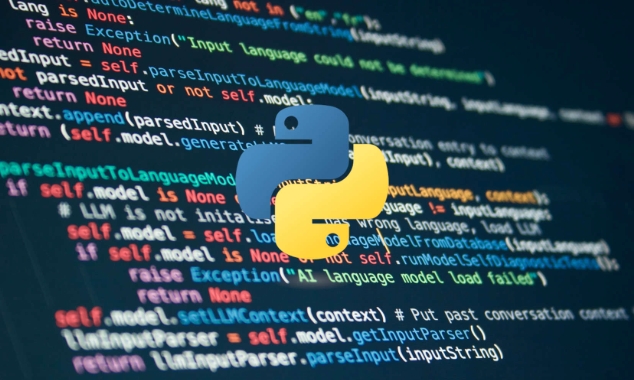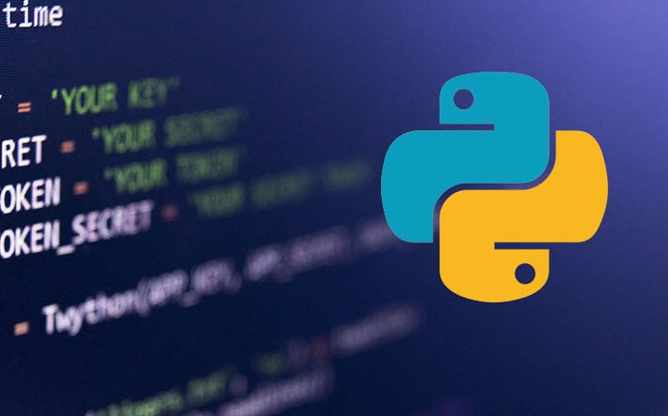In Python, == and is used differently. 1. == is used to compare whether the values of two objects are equal, and is suitable for most scenarios where data content consistency is required; 2. is is used to check whether two variables point to the same object in memory, mainly used for identity recognition, such as checking whether it is None. For example, two lists with the same content return True using ==, but using is to return False. Therefore, the appropriate operator should be selected according to the needs: use == to determine whether the values are the same, and use is to determine whether it is the same object.

In Python, == and is both used for comparison, but they do very different things. The short version is:

-
==checks if two values are equal. -
ischecks if two references point to the exact same object in memory.
That means even if two variables look the same (same value), they might not be the same object — and that's where is and == behave differently.
When to use ==
Use == when you want to compare the values of two objects. This is what most people expect when checking equality.

For example:
a = [1, 2, 3] b = [1, 2, 3] print(a == b) # True
Even though a and b are two separate lists, their contents are the same, so == returns True .

This works with strings, numbers, dictionaries, and basically any time you care about the data being the same, not the identity of the object.
When to use is
Use is when you want to check if two variables refer to the exact same object . It's comparing identities, not values.
Going back to the previous example:
a = [1, 2, 3] b = [1, 2, 3] print(a is b) # False
Here, a and b are two different list objects in memory, even though they contain the same values. So is returns False .
A common use case for is checking against None , because there's only one instance of None in Python:
value = get_data()
if value is None:
print("No data returned") This is the recommended way to test for None , since it's faster and more explicit than using == .
Gotchas and surprises
Python sometimes reuses small integers or short strings to save memory. That can make is seem like it works when it really shouldn't be used.
For example:
a = 100 b = 100 print(a is b) # Might return True a = 1000000 b = 1000000 print(a is b) # Probably returns False
This behavior depends on Python's internal optimizations and shouldn't be relied on.
Other cases to watch out for:
- Using
isto compare booleans (True is Trueis fine, but again, don't rely on it) - Comparing empty containers (
[] == []isTrue, but[] is []isFalse) - Mutable vs immutable types behaving differently under certain conditions
So just remember:
- Use
==when comparing values. - Use
isonly when checking identity, especially forNone.
Summary
To recap:
-
==compares values. -
iscompared identities (whether two references point to the same object). - Only use
isfor identity checks, especially withNone. - Don't assume small values or strings will always share identity.
Basically that's it.
The above is the detailed content of What is the difference between == and is in Python. For more information, please follow other related articles on the PHP Chinese website!

Hot AI Tools

Undress AI Tool
Undress images for free

Undresser.AI Undress
AI-powered app for creating realistic nude photos

AI Clothes Remover
Online AI tool for removing clothes from photos.

Clothoff.io
AI clothes remover

Video Face Swap
Swap faces in any video effortlessly with our completely free AI face swap tool!

Hot Article

Hot Tools

Notepad++7.3.1
Easy-to-use and free code editor

SublimeText3 Chinese version
Chinese version, very easy to use

Zend Studio 13.0.1
Powerful PHP integrated development environment

Dreamweaver CS6
Visual web development tools

SublimeText3 Mac version
God-level code editing software (SublimeText3)
 How to handle API authentication in Python
Jul 13, 2025 am 02:22 AM
How to handle API authentication in Python
Jul 13, 2025 am 02:22 AM
The key to dealing with API authentication is to understand and use the authentication method correctly. 1. APIKey is the simplest authentication method, usually placed in the request header or URL parameters; 2. BasicAuth uses username and password for Base64 encoding transmission, which is suitable for internal systems; 3. OAuth2 needs to obtain the token first through client_id and client_secret, and then bring the BearerToken in the request header; 4. In order to deal with the token expiration, the token management class can be encapsulated and automatically refreshed the token; in short, selecting the appropriate method according to the document and safely storing the key information is the key.
 Explain Python assertions.
Jul 07, 2025 am 12:14 AM
Explain Python assertions.
Jul 07, 2025 am 12:14 AM
Assert is an assertion tool used in Python for debugging, and throws an AssertionError when the condition is not met. Its syntax is assert condition plus optional error information, which is suitable for internal logic verification such as parameter checking, status confirmation, etc., but cannot be used for security or user input checking, and should be used in conjunction with clear prompt information. It is only available for auxiliary debugging in the development stage rather than substituting exception handling.
 What are python iterators?
Jul 08, 2025 am 02:56 AM
What are python iterators?
Jul 08, 2025 am 02:56 AM
InPython,iteratorsareobjectsthatallowloopingthroughcollectionsbyimplementing__iter__()and__next__().1)Iteratorsworkviatheiteratorprotocol,using__iter__()toreturntheiteratorand__next__()toretrievethenextitemuntilStopIterationisraised.2)Aniterable(like
 What are Python type hints?
Jul 07, 2025 am 02:55 AM
What are Python type hints?
Jul 07, 2025 am 02:55 AM
TypehintsinPythonsolvetheproblemofambiguityandpotentialbugsindynamicallytypedcodebyallowingdeveloperstospecifyexpectedtypes.Theyenhancereadability,enableearlybugdetection,andimprovetoolingsupport.Typehintsareaddedusingacolon(:)forvariablesandparamete
 How to iterate over two lists at once Python
Jul 09, 2025 am 01:13 AM
How to iterate over two lists at once Python
Jul 09, 2025 am 01:13 AM
A common method to traverse two lists simultaneously in Python is to use the zip() function, which will pair multiple lists in order and be the shortest; if the list length is inconsistent, you can use itertools.zip_longest() to be the longest and fill in the missing values; combined with enumerate(), you can get the index at the same time. 1.zip() is concise and practical, suitable for paired data iteration; 2.zip_longest() can fill in the default value when dealing with inconsistent lengths; 3.enumerate(zip()) can obtain indexes during traversal, meeting the needs of a variety of complex scenarios.
 Python FastAPI tutorial
Jul 12, 2025 am 02:42 AM
Python FastAPI tutorial
Jul 12, 2025 am 02:42 AM
To create modern and efficient APIs using Python, FastAPI is recommended; it is based on standard Python type prompts and can automatically generate documents, with excellent performance. After installing FastAPI and ASGI server uvicorn, you can write interface code. By defining routes, writing processing functions, and returning data, APIs can be quickly built. FastAPI supports a variety of HTTP methods and provides automatically generated SwaggerUI and ReDoc documentation systems. URL parameters can be captured through path definition, while query parameters can be implemented by setting default values ??for function parameters. The rational use of Pydantic models can help improve development efficiency and accuracy.
 How to test an API with Python
Jul 12, 2025 am 02:47 AM
How to test an API with Python
Jul 12, 2025 am 02:47 AM
To test the API, you need to use Python's Requests library. The steps are to install the library, send requests, verify responses, set timeouts and retry. First, install the library through pipinstallrequests; then use requests.get() or requests.post() and other methods to send GET or POST requests; then check response.status_code and response.json() to ensure that the return result is in compliance with expectations; finally, add timeout parameters to set the timeout time, and combine the retrying library to achieve automatic retry to enhance stability.
 Setting Up and Using Python Virtual Environments
Jul 06, 2025 am 02:56 AM
Setting Up and Using Python Virtual Environments
Jul 06, 2025 am 02:56 AM
A virtual environment can isolate the dependencies of different projects. Created using Python's own venv module, the command is python-mvenvenv; activation method: Windows uses env\Scripts\activate, macOS/Linux uses sourceenv/bin/activate; installation package uses pipinstall, use pipfreeze>requirements.txt to generate requirements files, and use pipinstall-rrequirements.txt to restore the environment; precautions include not submitting to Git, reactivate each time the new terminal is opened, and automatic identification and switching can be used by IDE.






